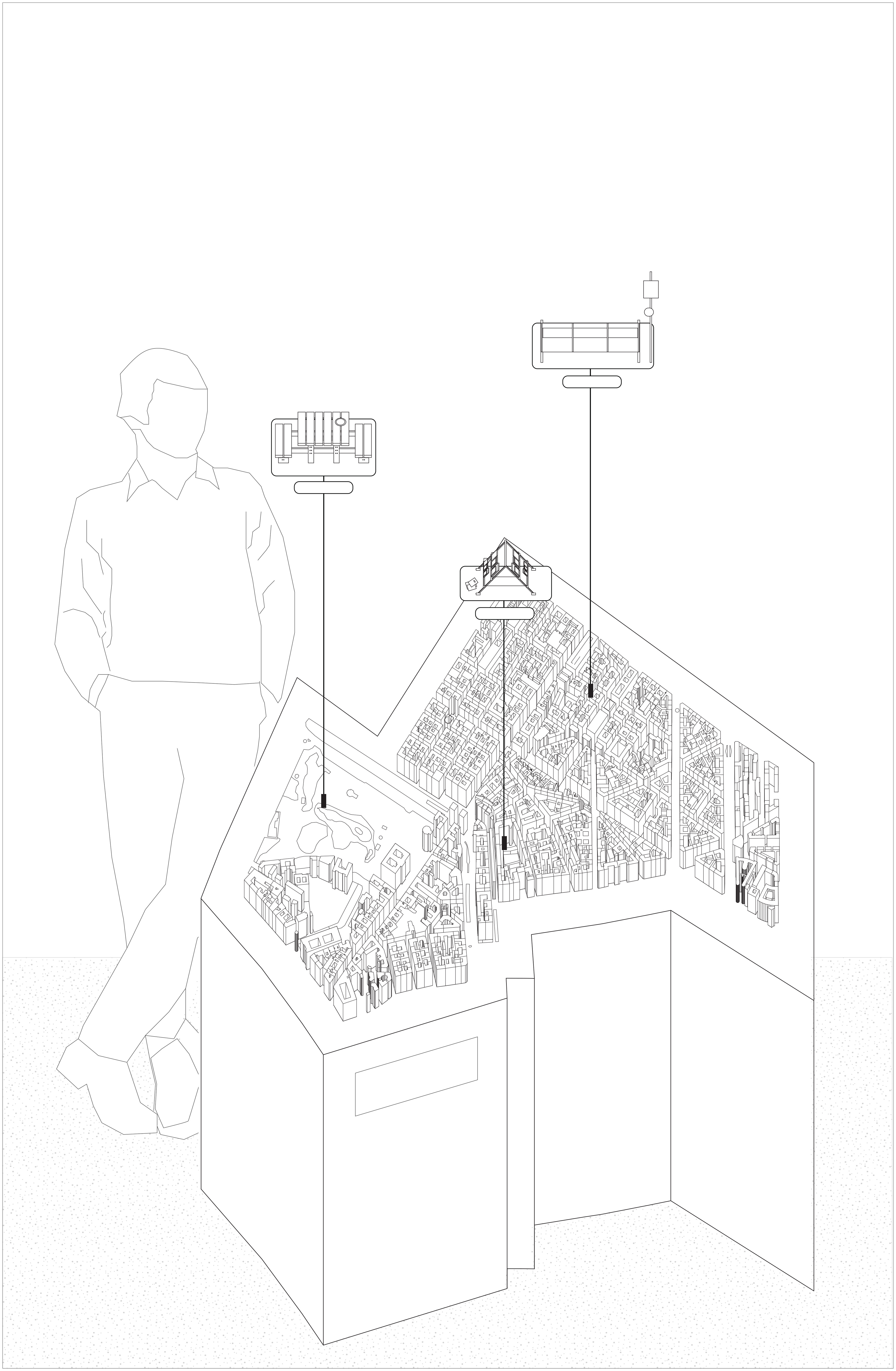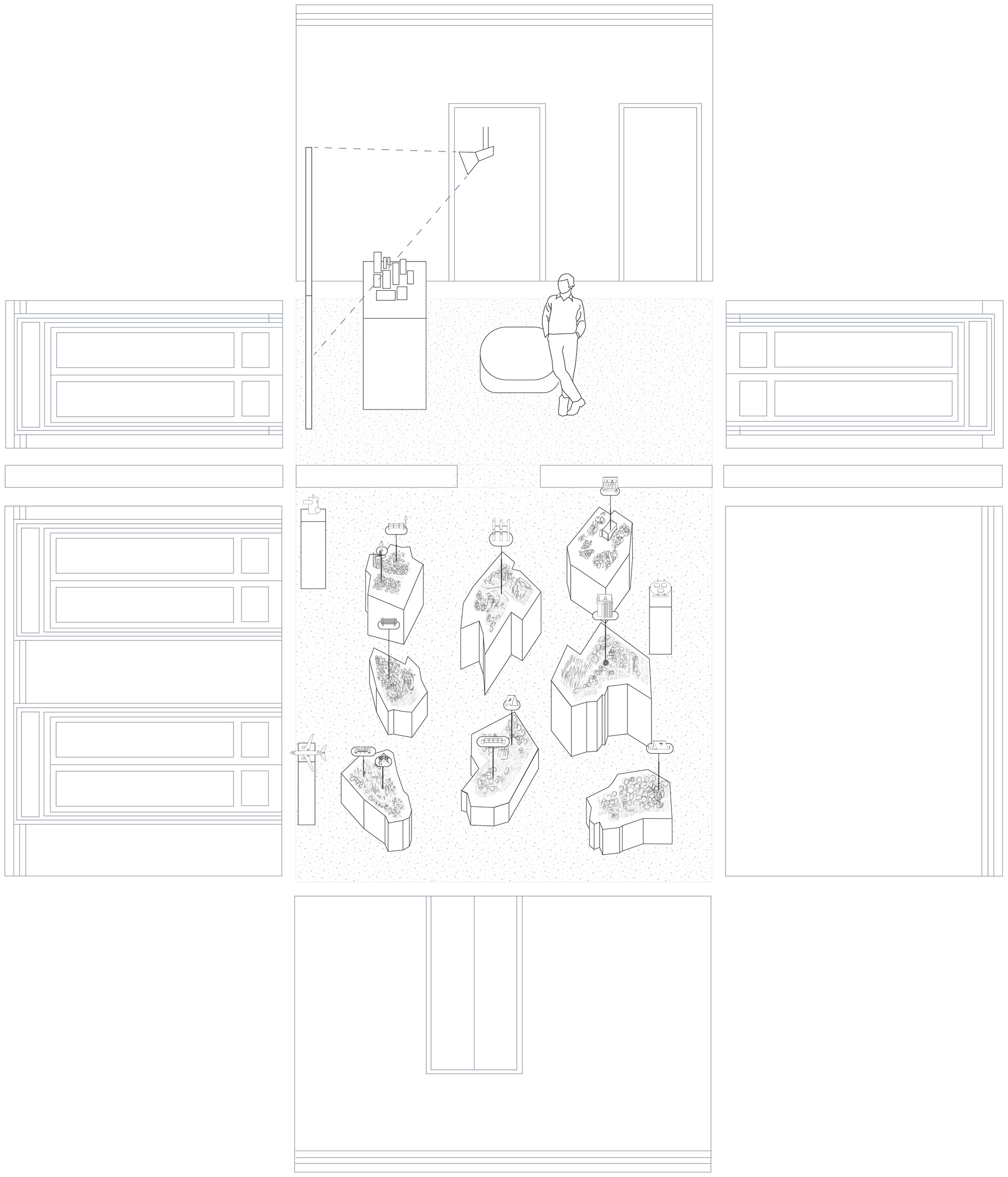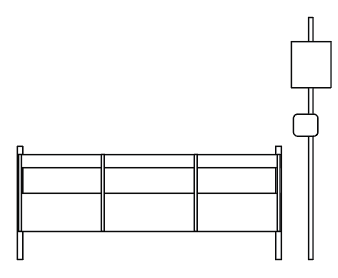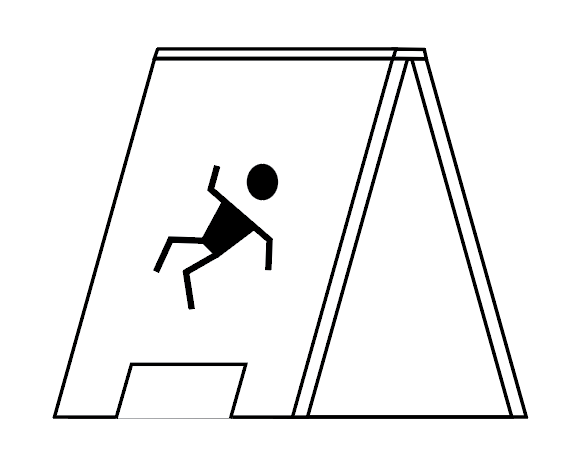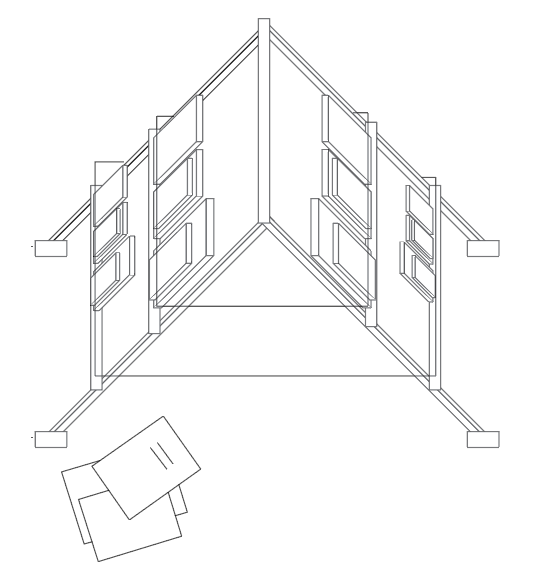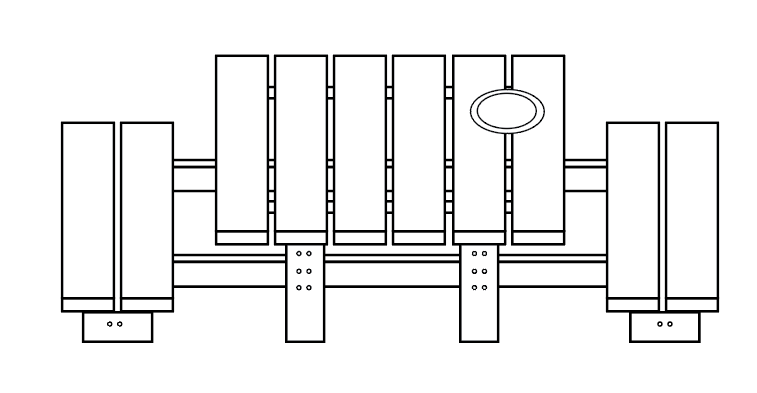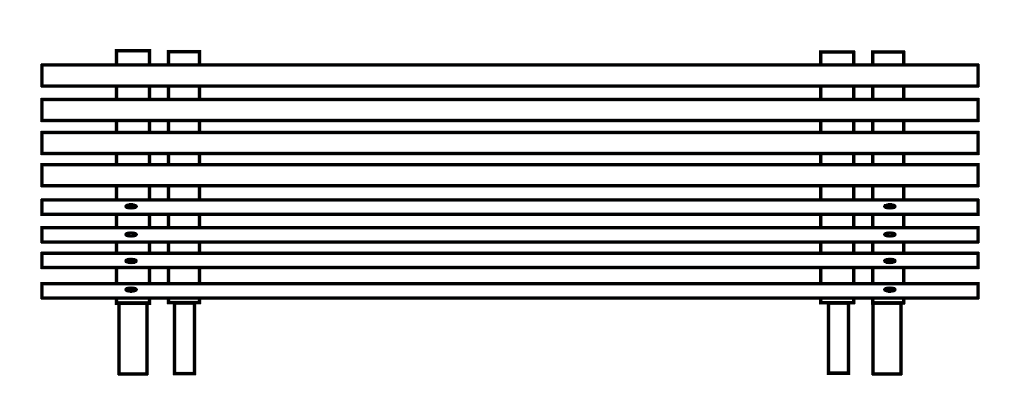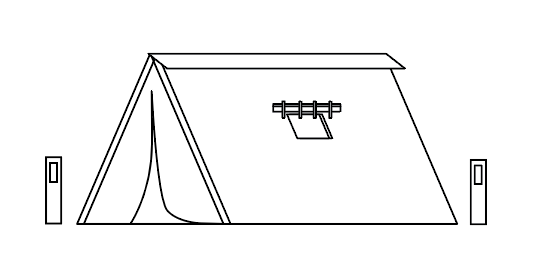
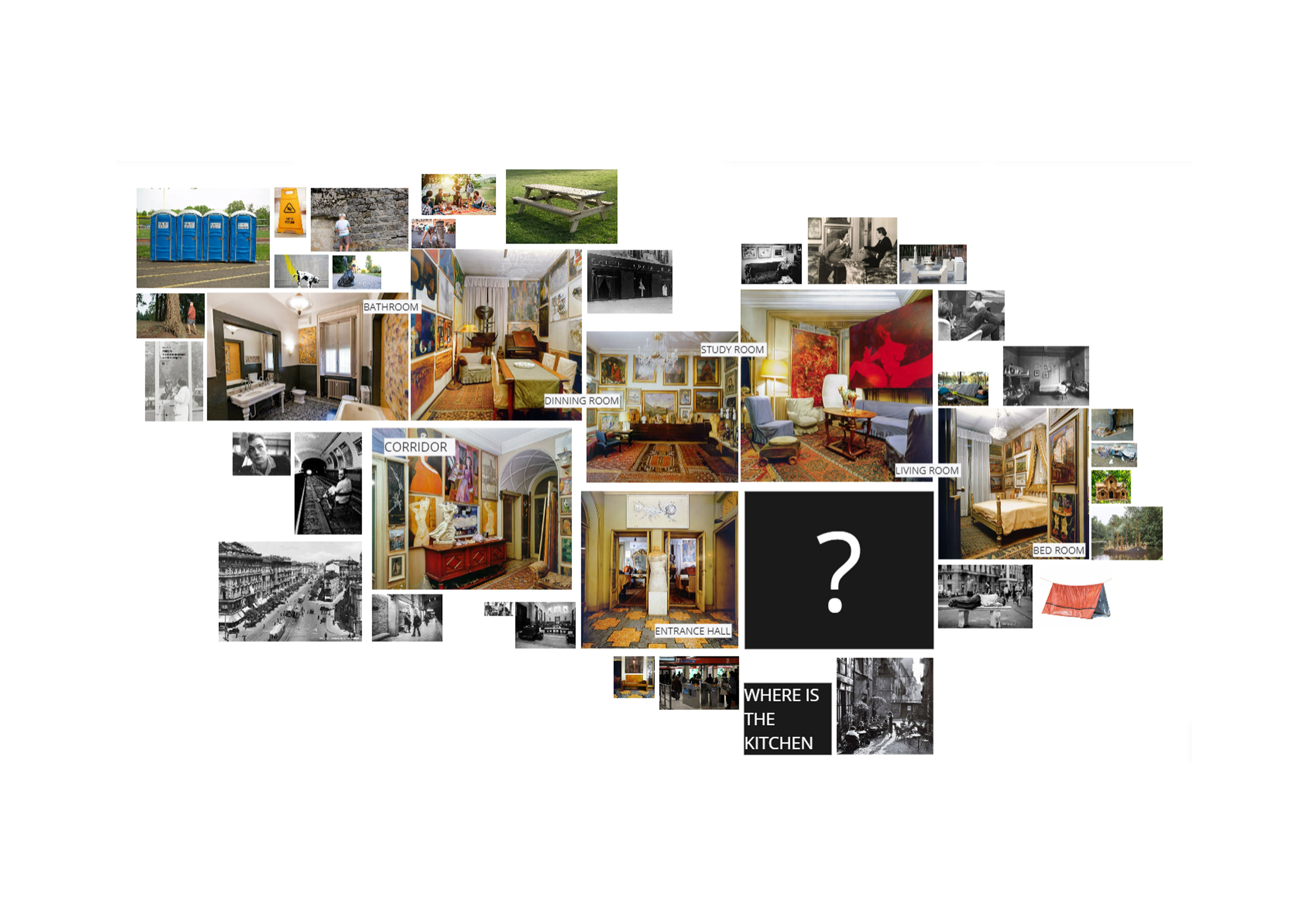
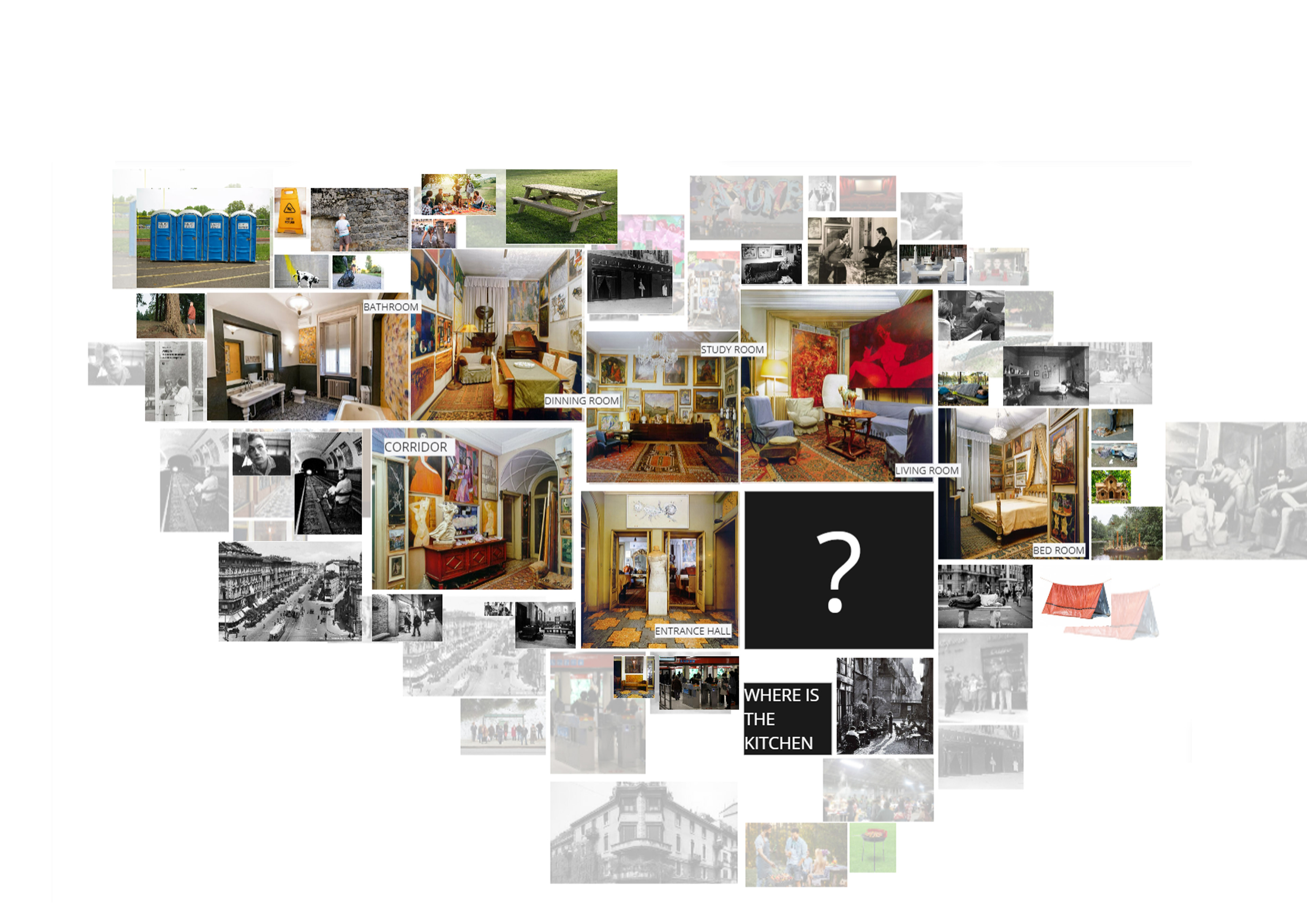



The house-museum showcases an incredible collection of artworks from various Italian artists of the 20th century, curated according to the tastes and choices of its owners, Marieda Di Stefano and Antonio Boschi. However, as its name suggests, does the house truly encompass all the functions of a home, and what concept defines the essence of a home? While touring the museum, one notices that it embodies every function of a home, from a fully furnished bathroom to a bedroom, yet there is a noticeable absence: the kitchen. Without the kitchen, we noticed an absence of domesticity in the house, which led us to search for it in the spaces of the city.
The aim of the subtle yet radical interventions made in the museum is to perceive the art collection within an expanded framework of relationships that take place in the city itself. We came up with the idea of the "Domestic City," where the city itself serves as a home. Placing a picnic table, commonly seen in parks, and benches reminiscent of dining and living rooms, illustrates to us the expanded boundaries of urban homes. The purpose of acquiring and placing these urban furnishings in the house is to create a strong spatial contrast for visitors. This scrutiny of complex relationships leads us to contemplate how the boundaries between urban and domestic life intertwine, questioning the role of the home within the city and the concept of domesticity.


